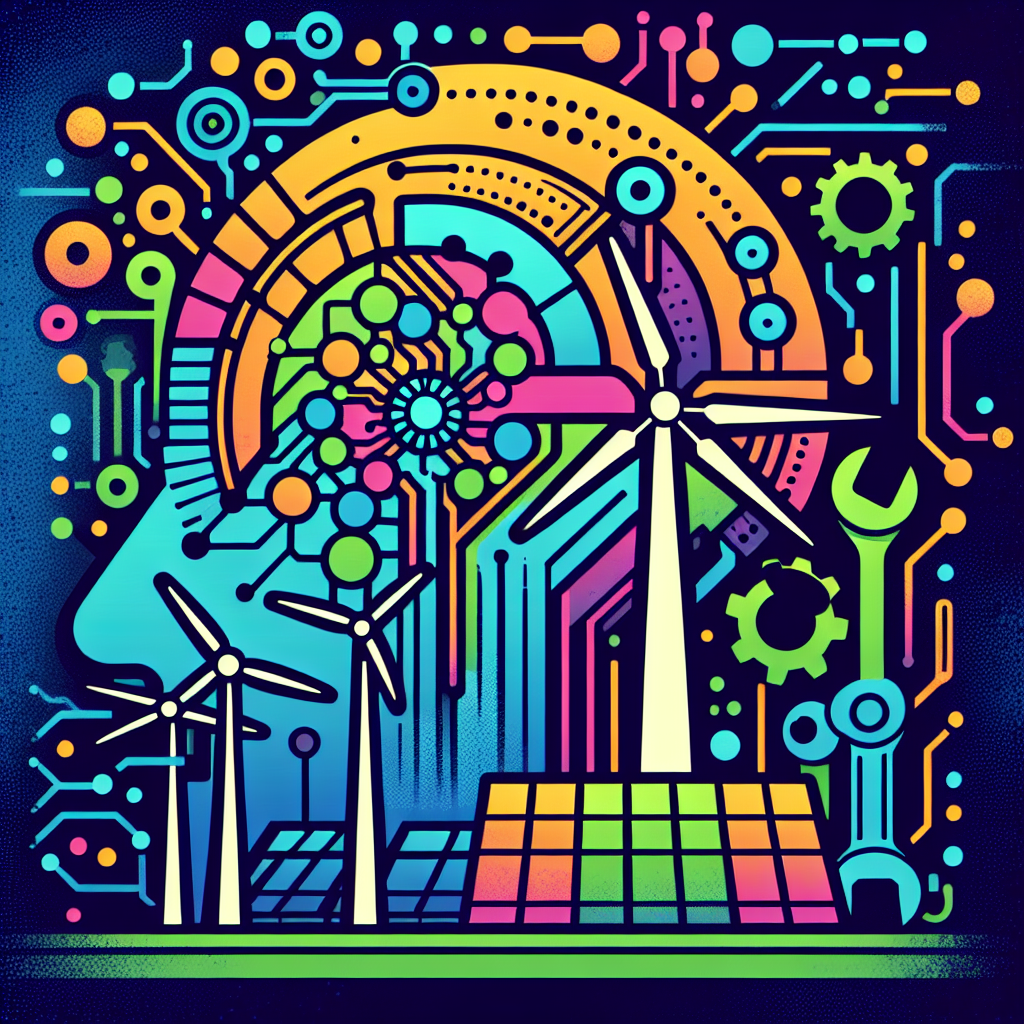AI-Driven Predictive Maintenance for Renewable Energy Infrastructure
Introduction
As the world transitions towards a more sustainable future, renewable energy sources like solar, wind, and hydro power are becoming increasingly important. However, ensuring the reliable and efficient operation of renewable energy infrastructure presents unique challenges. One of the key challenges is the maintenance of these systems, as failures can lead to costly downtime and decreased energy production. Traditional maintenance practices, such as time-based or reactive maintenance, are often inefficient and can result in unnecessary maintenance costs.
AI-driven predictive maintenance offers a solution to these challenges by leveraging the power of artificial intelligence and machine learning to predict equipment failures before they occur. By analyzing data from sensors, historical maintenance records, and other sources, AI can identify patterns and trends that indicate potential issues with equipment. This allows maintenance teams to proactively address problems before they lead to costly failures, reducing downtime and increasing the overall reliability of renewable energy infrastructure.
Benefits of AI-Driven Predictive Maintenance
There are several key benefits of implementing AI-driven predictive maintenance for renewable energy infrastructure:
1. Increased Reliability: By predicting equipment failures before they occur, AI-driven predictive maintenance can help to increase the reliability of renewable energy systems. This can lead to reduced downtime and increased energy production, ultimately improving the overall performance of the infrastructure.
2. Cost Savings: Proactively addressing maintenance issues can help to reduce maintenance costs by avoiding costly repairs and downtime. AI-driven predictive maintenance can also help to optimize maintenance schedules, ensuring that maintenance is performed only when necessary.
3. Improved Safety: Predictive maintenance can help to identify potential safety hazards before they become serious issues. By addressing maintenance problems proactively, AI-driven predictive maintenance can help to ensure the safety of maintenance teams and other personnel working on renewable energy infrastructure.
4. Enhanced Efficiency: By analyzing data from sensors and other sources, AI-driven predictive maintenance can help to identify opportunities for optimization and efficiency improvements. This can lead to increased energy production and reduced operating costs for renewable energy systems.
5. Long-Term Sustainability: By increasing the reliability and efficiency of renewable energy infrastructure, AI-driven predictive maintenance can help to ensure the long-term sustainability of these systems. This can help to reduce the environmental impact of renewable energy production and support the transition towards a more sustainable future.
Implementation of AI-Driven Predictive Maintenance
Implementing AI-driven predictive maintenance for renewable energy infrastructure involves several key steps:
1. Data Collection: The first step in implementing AI-driven predictive maintenance is to collect data from sensors, historical maintenance records, and other sources. This data will be used to train machine learning models to predict equipment failures.
2. Data Analysis: Once the data has been collected, it must be analyzed to identify patterns and trends that indicate potential equipment failures. This analysis will help to train machine learning models to accurately predict maintenance issues.
3. Model Training: Machine learning models must be trained using the data collected and analyzed. This involves using algorithms to identify patterns in the data and make predictions about future equipment failures.
4. Deployment: Once the machine learning models have been trained, they can be deployed to monitor equipment in real-time and predict maintenance issues before they occur. This enables maintenance teams to proactively address problems and avoid costly downtime.
5. Monitoring and Optimization: AI-driven predictive maintenance systems must be continuously monitored and optimized to ensure their effectiveness. This involves monitoring the performance of the models, updating them with new data, and making adjustments as needed to improve their accuracy.
Frequently Asked Questions
Q: How does AI-driven predictive maintenance differ from traditional maintenance practices?
A: Traditional maintenance practices, such as time-based or reactive maintenance, are based on predetermined schedules or responding to equipment failures. AI-driven predictive maintenance uses artificial intelligence and machine learning to analyze data and predict equipment failures before they occur, allowing maintenance teams to proactively address issues and avoid costly downtime.
Q: What types of data are used in AI-driven predictive maintenance?
A: AI-driven predictive maintenance uses data from sensors, historical maintenance records, and other sources to predict equipment failures. This data can include information about equipment performance, environmental conditions, and maintenance history.
Q: What are the key benefits of implementing AI-driven predictive maintenance for renewable energy infrastructure?
A: The key benefits of AI-driven predictive maintenance for renewable energy infrastructure include increased reliability, cost savings, improved safety, enhanced efficiency, and long-term sustainability. By predicting equipment failures before they occur, AI-driven predictive maintenance can help to improve the overall performance of renewable energy systems.
Q: How can I implement AI-driven predictive maintenance for renewable energy infrastructure?
A: Implementing AI-driven predictive maintenance involves collecting data, analyzing data, training machine learning models, deploying the models, and monitoring and optimizing the system. It is important to work with experienced data scientists and engineers to ensure the successful implementation of AI-driven predictive maintenance.
Conclusion
AI-driven predictive maintenance offers a powerful solution to the challenges of maintaining renewable energy infrastructure. By leveraging artificial intelligence and machine learning, predictive maintenance can help to increase the reliability, efficiency, and sustainability of renewable energy systems. By proactively addressing maintenance issues before they occur, AI-driven predictive maintenance can help to reduce downtime, lower maintenance costs, and improve the overall performance of renewable energy infrastructure. As the world continues to transition towards a more sustainable future, AI-driven predictive maintenance will play an increasingly important role in ensuring the reliable operation of renewable energy systems.

